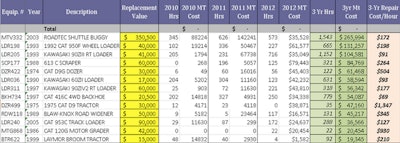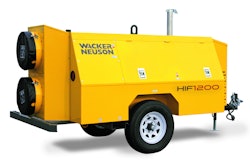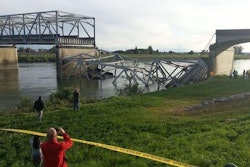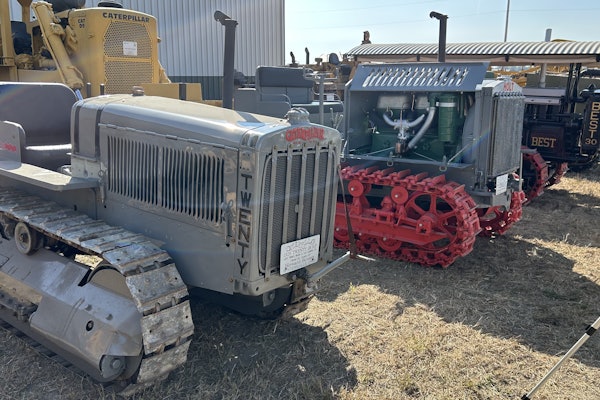
56: Use Failure Mode and Effects Analysis (FMEA)
Inspection helps to detect early signs of changes in condition—a warning of impending failure. But when to examine and what to examine is not always easy. Many inspection tasks and intervals were determined by OEMs who wanted to protect their equipment during warranties; they offer best guesses based on “let’s be cautious and check this often.” By using an FMEA study of the equipment, you can identify which parts are most problematic and impactful when they fail and identify the best way to mitigate or prevent their failure or detect early enough to take correct action.
57: Look for every opportunity to outsource maintenance services
You cannot retain core competencies in every area, nor should you try. Look for those services that make sense due to the degree of specialization, uniqueness of facilities or equipment support, and frequency of use, such as tires, painting, transmission work, welding, engine overhauls, small vehicle services, etc.
58: Look at the possibility of outsourcing your parts room
There are companies that will do it if the inventory value and purchases per year warrant it. They are called integrated suppliers. You sell them the inventory and they sell it back. It is less hassle if done right. They should have better buying power since their size and inventory control is their core competency, where it may not be yours.
59: If you outsource inventory control—manage it
Maintain strong relationships with your partner and manage them just as you would your own folks. Have routine planning meetings and periodic (quarterly progress review) meetings. Set turn, accuracy rates and service level goals for them. Manage it! Remember, their objective is to turn over parts, which means selling parts. That may not always be in your best interest.
60: Manage your vendors
Measure all key vendors using Key Performance Indicators)—hold them accountable for performance and costs. Set specific goals and measures with them and periodically monitor them to ensure compliance. Make the expectations clear. Evaluate their performance using a rating system of cost, service, delivery, quality, etc.
61: Help your major suppliers/vendors to improve
They may not know how and you are only as strong as your weakest link. You may have to spend time with them to set clear expectations and provide advice on how to meet your expectations.
62: Have a work order system
Work orders should cover 100 percent of all work in order to have accurate costing. This is essential in managing your costs. You need a process to request work, get work prioritized, get it approved, get it activated for execution and—most important—something to charge costs to as well as establishing a history of those activities.
63: Charge all maintenance costs (labor and material) to equipment
You can’t improve it if you don’t have a record of it.
64: Capture history carefully
Maintaining good equipment histories on all equipment helps to identify problem prone and costly equipment. Focus on 80/20 rule: 80 percent of your problems will come from 20 percent of your components, and 20 percent of your equipment will produce 80 percent of your costs.
65: Examine your shop location configuration
Analyze the value of a centralized versus decentralized shop arrangement if you have multiple shops. In many cases, you can maintain higher quality shop in a central location rather than trying to spread them out. The costs of field maintenance versus shop maintenance may be cheaper in the long run.
66: Look at keeping your equipment longer
This can help reduce your capital expenditures and help with depreciation. If you couple this with increasing utilization, your ROI improves significantly.
67: Consolidate lube types
Consolidate lube types to minimize duplication.. Make sure you are following the manufacturers’ recommendations for the type because type of lubrication is based on speed, loads and temperature requirements. All lubes are not the same.
68: Improve lube storage and handling
About 50 percent of all lube related failures are due to poor handling and storage practices. Improving storage by covering containers, using filters, eliminating open containers, avoiding storing drums on their end, taking periodic samples of bulk storage and using smaller, more frequent turnover of storage can help improve performance and costs.
69: Train in Tribology
Train mechanics or techs in tribology, or the science of lubrication. Most have never had any formal training in lubrication and that results in poor decisions, poor execution practices… and more costs., Here is an example of the training and certification.
70: Use the Economic Order Quantity (EOQ) formula
When purchasing, use the EOQ to ensure you don’t purchase too much of a “good deal.” A 20 percent savings on items that will sit on the shelf for the next five years may not have been the best use of the company’s money. Here is a link showing the formula.
71: Implement operator care
A formal process to enroll operators in the basic care of their equipment is a great savings strategy. By having the folks closest to the equipment taking better care of it and reporting problems while they are small you can eliminate 70 to 75 percent of potential large-scale failures later. More ownership of the equipment leads to stewardship and better performance. This lowers your maintenance costs.
72: Avoid spending over 50 percent of residual value a year
The rule of thumb is to avoid spending more than 50 percent of the residual or resale value per year on maintaining the asset. The following chart shows what happened when a company did this for several years. The far right hand column shows the maintenance cost per hour to keep the equipment serviceable. This is putting good money after bad.

73: Use a dispatching program
Serious waste is made on mobilization moves due to poor communications and coordination. Managers and staff spend hours each year trying to locate equipment. “Do I have a spare roller backup?” or “Where is 342 skid steer?” Rental equipment will sit unused for days or weeks because no one was tracking it. Using a dispatching program is great way to minimize idle time of equipment sitting and not generating revenue.
74: Ensure you are using good maintenance practices
Maintenance systems are like accounting systems. There are some minimal expectations as to how they should work, but many folks have been promoted up from the ranks without a thorough knowledge as to what that looks like. You may need some outside help if you don’t think your system is running as efficiently as it should be. Consider using a third party assessment to see where you are and what the opportunities and value to improve.
About the Author














